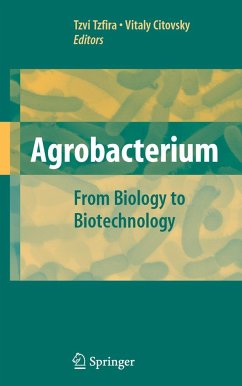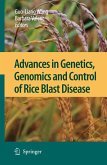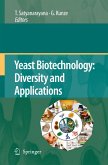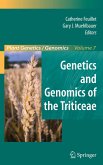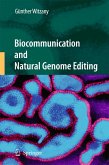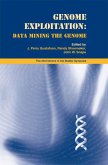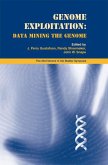Agrobacterium is a plant pathogen which causes the "crown-gall" disease, a neoplastic growth that results from the transfer of a well-defined DNA segment ("transferred DNA", or "T-DNA") from the bacterial Ti (tumor-inducing) plasmid to the host cell, its integration into the host genome, and the expression of oncogenes contained on the T-DNA. The molecular machinery, needed for T-DNA generation and transport into the host cell and encoded by a series of chromosomal (chv) and Ti-plasmid virulence (vir) genes, has been the subject of numerous studies over the past several decades. Today, Agrobacterium is the tool of choice for plant genetic engineering with an ever expanding host range that includes many commercially important crops, flowers, and tree species. Furthermore, its recent application for the genetic transformation of non-plant species, from yeast to cultivated mushrooms and even to human cells, promises this bacterium a unique place in the future of biotechnologicalapplications.
The book is a comprehensive volume describing Agrobacterium's biology, interactions with host species, and uses for genetic engineering.
The book is a comprehensive volume describing Agrobacterium's biology, interactions with host species, and uses for genetic engineering.
From the reviews:
"A compilation of many aspects of Agrobacterium research, with each chapter authored by experts in the field. Though the book is heavily oriented toward the genetic/molecular basis of the gene transfer process, it includes the history of Agrobacterium research, nomenclature, and basic biology of the bacterial/plant interaction. The final chapters review bioethics and legal aspects of Agrobacterium-mediated gene transfer. Summing Up: Recommended. Graduate students and researchers/faculty." (L. M. Baird, CHOICE, Vol. 45 (11), August, 2008)
"A compilation of many aspects of Agrobacterium research, with each chapter authored by experts in the field. Though the book is heavily oriented toward the genetic/molecular basis of the gene transfer process, it includes the history of Agrobacterium research, nomenclature, and basic biology of the bacterial/plant interaction. The final chapters review bioethics and legal aspects of Agrobacterium-mediated gene transfer. Summing Up: Recommended. Graduate students and researchers/faculty." (L. M. Baird, CHOICE, Vol. 45 (11), August, 2008)

